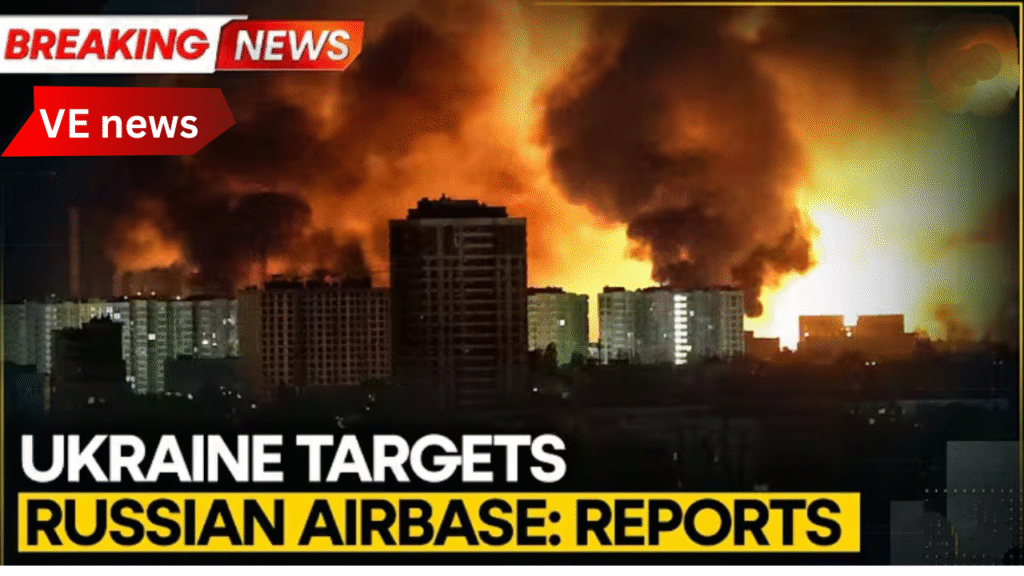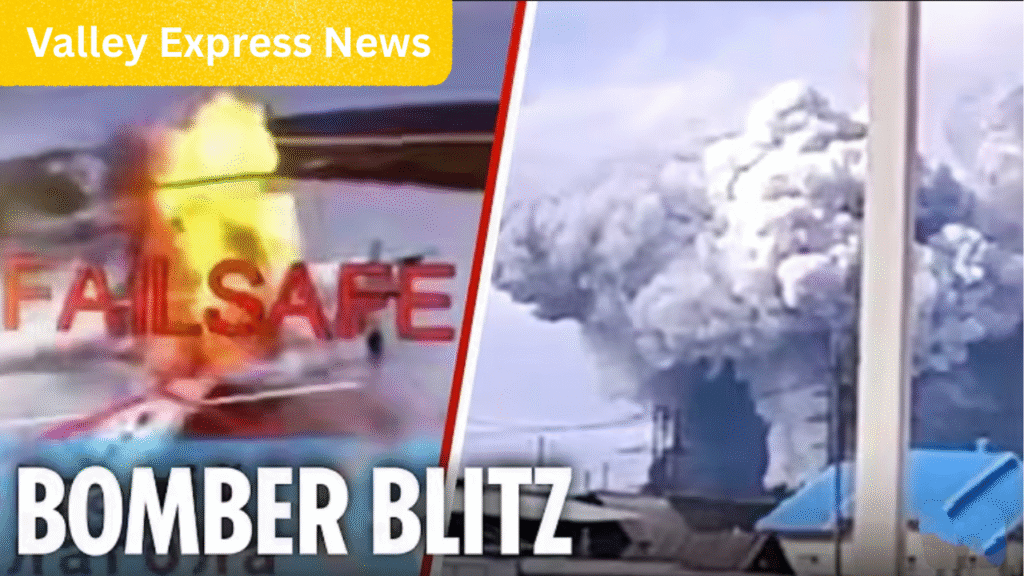Highlights:
Ukraine on June 1st launched a massive strike on Russian strategic aviation in Siberia, Mormansk in the north and other places. A Ukrainian drone attack has destroyed more than 40 Russian planes deep in Russia’s territory, a Ukrainian security official said if conformed, the strikes would be the most damaging Ukrainian drone attack of the war would be a significant setback for Moscow. The official said that the strikes were conducted by the SBU Domestic Intelligence. Agency and that they had simultaneously hit four Russian Military airbases on Sunday.
The source speaking condition of anonymity said more than 40 aircraft were hit including 295 and 222 stratigic bombers which Russia uses to fire long range missiles at Ukraine the official said the attack took over one and half years to execute and was personally supervisor by Ukrainian President Vladimir Zalin ski. The operation se drones transported in containers carried by trucks deep into Russian territory. The drone is reportedly hit 41 bombers stationed at several airfields on Sunday afternoon, including the balaya airbase in Russia’s kotak region.

Ukraine has already launched a number of strategic drone attacks deep within Russian territory in 2025, marking a dramatic escalation in the continuing confrontation between Ukraine and Russia. With unmanned aircraft systems (UAS) increasingly influencing the battlefield distant from the front lines, these actions represent a paradigm shift in the character of contemporary warfare.
Ukrainian Drone Capabilities’ Ascent
The skills of the Ukrainian Armed Forces in drone warfare have advanced quickly since Russia’s full-scale invasion of Ukraine in February 2022. By 2024, Ukraine had established a strong domestic drone industry, having previously relied on Turkish Bayraktar TB2 drones and commercially accessible quadcopters. This includes swarming technology that can overcome conventional air defenses, long-range fixed-wing drones, and kamikaze drones (loitering weapons).
By 2025, a key component of Ukraine’s asymmetric warfare plan is its drone program, which is backed by both domestic innovation hubs and NATO partners. It provides an affordable means of attacking industrial, military, and symbolic targets inside Russian borders, upsetting strategic planning, logistics, and morale.

Russian Reaction and Retaliation
The drone strikes were denounced as terrorist actions by the Kremlin, which also promised reprisal. Russia has responded by strengthening its air defenses, placing more S-400 batteries around strategic locations, and enhancing its electronic warfare capabilities to deflect or jam drones.
However, similar countermeasures have been foreseen by drone makers in Ukraine. Numerous drone strikes in 2025 have employed low-flying, stealthy drones that are difficult to detect and intercept since they are made of materials that avoid radar and can navigate on their own.
Furthermore, it is impossible to overstate the psychological warfare component of these assaults. Public trust in the government’s ability to safeguard its inhabitants is declining as drone alerts grow commonplace in areas of Russia that were not affected by the war.
Strategic Consequences
The Ukrainian drone strikes in 2025 mark a significant shift in contemporary warfare. Ukraine has accomplished what previously required highly skilled air forces: the capacity to project power far into enemy territory with comparatively cheap technology. The democratization of long-range attack capabilities is a larger trend that is highlighted by this change, which also threatens traditional military doctrines. The use of drones by Ukraine is increasingly being viewed as a model for asymmetric warfare by small countries, rebel organizations, and even non-state actors.
Russian Strategic Dilemma and Countermeasures
Russia has increased its air defense network in response to the growing threat posed by drones, placing Pantsir-S1 and S-400 systems around important cities and infrastructure. Additionally, it has made significant investments in electronic warfare units that may intercept or jam UAV signals. However, Russia’s military capabilities have been overextended due to the sheer number and versatility of Ukrainian drone strikes in 2025. Internal Russian reports indicate growing anxiety over the incapacity to defend deep territory against these low-cost but high-impact attacks, despite official denials.

Psychological and Geopolitical Effects
In addition to changing the military balance, the Ukraine drone strike on the Russia 2025 campaign has changed the geopolitical narrative:
Global Attention and Support:Ukraine’s ability to strike inside Russia has impressed its allies and maintained the flow of Western aid. It demonstrates technological maturity and strategic depth.
Internal Pressure in Russia: As drone attacks interrupt daily life and destroy the sense of security, civilian concern and criticism of the Kremlin are increasing. The public can no longer be completely protected from the realities of the conflict by even state-run media.
Global Military Doctrine Shift: In reaction to Ukraine’s successful employment of drones, countries all over the world are reconsidering their military plans. More money is being spent on drone and counter-drone systems by nations in the Middle East, Asia, and Europe.

Conclusion: Technology Rewrites a war
The 2025 drone strike on Russia by Ukraine marks a significant change in the war’s dynamics. Ukraine has employed drone warfare to rethink its battlefield strategy and take on a more formidable opponent on its own soil with creativity, resourcefulness, and unwavering will. These strikes have altered how international powers prepare for combat and conduct conflicts. Even while the war’s humanitarian cost is still terrible and enormous, Ukraine’s 2025 drone campaign serves as a reminder of how technology may strengthen resistance, compel strategic reconsideration, and even alter the path of history.